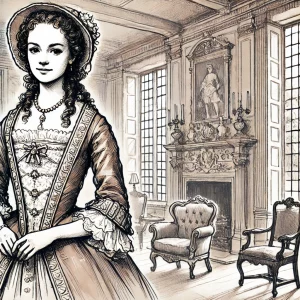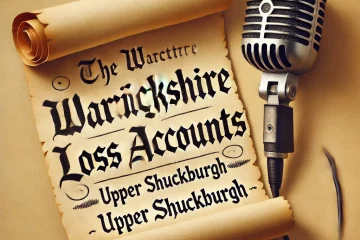Women’s Activism in the English Civil War
 During the English Civil War, Jane Ingilby stood defiantly in Ripley Castle, holding a pistol to Oliver Cromwell’s chest to protect her brother. This is just one of the remarkable stories of women who played pivotal roles in the conflict.
During the English Civil War, Jane Ingilby stood defiantly in Ripley Castle, holding a pistol to Oliver Cromwell’s chest to protect her brother. This is just one of the remarkable stories of women who played pivotal roles in the conflict.
The English Civil War (1642–1651) was a period of intense conflict and upheaval. While history often highlights the contributions of men, many women also played significant roles in the war. This post delves into the story about women activists during the English Civil war: Jane Ingilby, Katherine and Elizabeth Murray of Ham House, and Lady Mary Bankes of Corfe Castle. How did these women contribute to the war effort, and what legacies did they leave behind?
Jane Ingilby – The Soldier at Marston Moor
Jane Ingilby, also known as “Trooper Jane,” came from a prominent Royalist family. Her brother, Sir William Ingilby, was a staunch supporter of King Charles I. During the Battle of Marston Moor in 1644, Jane disguised herself as a man and fought alongside her brother. After the Royalists were defeated, Jane returned to Ripley Castle. When Oliver Cromwell, a leading figure of the Parliamentarian forces and later Lord Protector of England, arrived at the castle, she held him at gunpoint to protect her brother, who was hiding in a secret priest hole. Jane’s bravery earned her the nickname “Trooper Jane,” and her story remains a testament to the courage of women during the war. She spent her later years working on a farm to pay off fines imposed by Parliament and died before the monarchy’s restoration in 1651..
Katherine and Elizabeth Murray of Ham House – The Politicians
Other women activists during the English Civil war, Katherine and Elizabeth Murray, were influential Royalist supporters who managed Ham House, a critical strategic location near London. The sisters used their home as a meeting place for Royalist conspirators and played crucial roles in intelligence gathering and resource management for the Royalist cause. Their political manoeuvring and support were vital during the war.. The Murrays’ contributions helped maintain Royalist morale and logistics. Their involvement exemplifies the often-overlooked political activism of women during the Civil War.
who managed Ham House, a critical strategic location near London. The sisters used their home as a meeting place for Royalist conspirators and played crucial roles in intelligence gathering and resource management for the Royalist cause. Their political manoeuvring and support were vital during the war.. The Murrays’ contributions helped maintain Royalist morale and logistics. Their involvement exemplifies the often-overlooked political activism of women during the Civil War.
Lady Mary Bankes – The Defender of Corfe Castle
Lady Mary Bankes was married to Sir John Bankes, the Attorney General to King Charles I. When the war broke out, Sir John was away, leaving Mary in charge of Corfe Castle. In 1643, Lady Mary successfully defended Corfe Castle against a siege by Parliamentary forces. Using cunning tactics and sheer determination, she and her small garrison repelled several attacks until the castle eventually fell in 1646 due to betrayal from within (Wikipedia). Lady Mary Bankes is remembered as a symbol of steadfast loyalty and bravery. Her defense of Corfe Castle is one of the most celebrated episodes of female resistance during the Civil War.
Did You Know?
During the English Civil War, it was not uncommon for women to take up arms, act as spies, or manage estates. King Charles I even passed a law in 1644 banning women from wearing men’s clothes and fighting in battles due to the significant number of women participating in the war.
The stories of Jane Ingilby, Katherine and Elizabeth Murray, and Lady Mary Bankes highlight the critical roles women played in the English Civil War. Their courage, intelligence, and determination left lasting legacies that challenge the traditional narratives of the war. As historian Diane Purkiss notes, “These women were not just passive victims of war but active participants who shaped its course.”
Find Out More!
- Book: “The English Civil War: A People’s History” by Diane Purkiss.
- Website: British Civil Wars Project.
- Museum: Visit Ripley Castle and Ham House for historical tours and exhibits on the English Civil War.

0 Comments